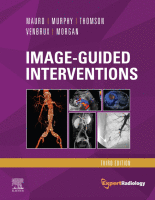Physical Address
304 North Cardinal St.
Dorchester Center, MA 02124

The rich vascular supply of the pelvis not only supports the structures contained within it, including the bladder, rectum, and reproductive organs, but also extends to the lower extremities. For a complete understanding of vascular anatomy as it pertains to…

The entity of visceral artery aneurysms (VAAs) includes aneurysms of the splanchnic circulation and those of the renal artery. Aneurysms of the splanchnic circulation include aneurysms of the celiac trunk, superior mesenteric artery (SMA), inferior mesenteric artery or their branches.…

Embolization of the splenic artery has become established practice in the treatment of splenic hemorrhage following abdominal trauma since it was first described by Sclafani in 1981. There has also been a progressive expansion in the use of splenic artery…

Trauma to the liver and spleen is usually the result of blunt abdominal injury caused by road traffic accidents or falls. Other important causes are penetrating injuries or iatrogenic trauma, most often during or after surgery. Liver or splenic injury…

Since the first clinical attempt by Thomas E. Starzl in 1963, liver transplantation is now accepted as the gold standard treatment of advanced chronic liver disease, of irreversible hepatocellular failure, and for a selected group of patients with hepatocellular carcinoma.…

One of the prerequisites for partial hepatic resection is the presence of enough remaining functional liver parenchyma to avoid life-threatening postoperative liver failure. Therefore, the possibilities of curative resection of liver tumors are strongly dependent on the volume of the…

Clinical Relevance Patients who have liver metastases that are not amenable to resection or ablation generally have poor survival rates. Liver metastases from neuroendocrine tumor (NET), sarcoma, colorectal cancer (CRC), melanoma, and pancreatic cancer can be treated using transarterial embolization…

The liver is an important site of metastatic disease for many primary malignancies, and liver metastases ( Figs. 35.1, 35.2, and 35.3 ) are a leading cause of cancer-related death. Two major mechanisms for disease spread to the liver have…

Clinical Relevance Hepatocellular carcinoma (HCC) is the most common primary liver cancer, ranking fifth for men and seventh for women as a source of primary malignancy. Cirrhosis secondary to chronic infection with hepatitis B and/or hepatitis C is the main…

Transvenous Pressure Measurements Clinical Relevance Chronic inflammation of the liver results in hepatic fibrosis and leads ultimately to cirrhosis. Portal hypertension is the hallmark of liver cirrhosis and is defined as a portal pressure gradient (pressure gradient between portal vein…